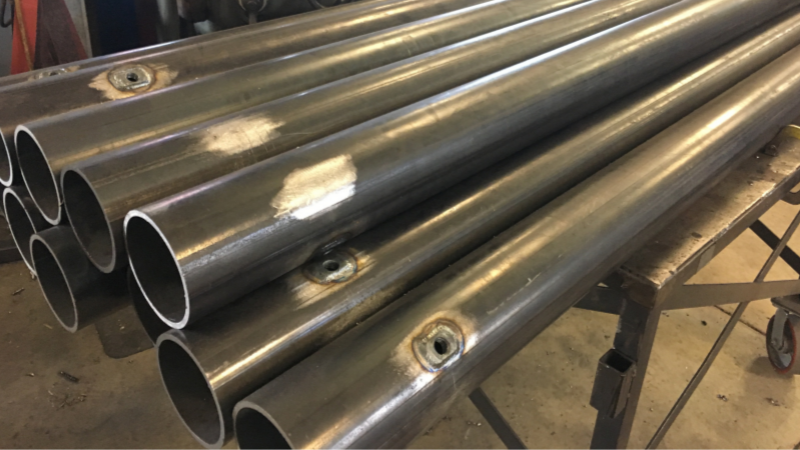Ask anyone, and they’ll say quality materials are important in any project. But also, there is pressure to cut costs in order to offer lower prices, win jobs, and maximize profits. It can be tempting to use the cheapest materials possible, but a lower price may come with lower quality. And when it comes to your steel fabrication project, that can be downright dangerous.
What Are the Dangers of Low-Quality Steel?
Bottom line, it just doesn’t last. Low-quality steel can be brittle and crack easily. You will need to repair or replace items fabricated with bad steel — and probably sooner rather than later. Not only is this not cost-effective, it can create dangerous situations, including the failure of stair railings or even stair or building collapse.
How Do I Know I’m Getting High-Quality Steel?
Just by looking at it, you probably won’t be able to tell. Several types of testing are used to judge the quality of steel, including:
-
- Metallurgical testing to gauge its makeup. Cheap fillers or an improper balance of metals can lead to poor-quality steel.
- Stress testing to see how it will react to factors such as temperature, corrosion, and impact. Bad steel will break or deteriorate easier/sooner than good steel.
- Tensile strength and hardness testing to determine the durability of steel.
But you’re not a testing lab, and most steel fabricators aren’t either. A shortcut to being confident in the steel used in your projects? Make sure your steel fabricator uses domestic steel instead of foreign.
Differences in American Steel & Foreign Steel
The United States once led the world in steel production, but over time, other countries built their own industries. Today, China is by far the largest producer and exporter of steel in the world. India, Japan, and South Korea follow as the top producers outside of the US.
However, there are important differences between American and foreign steel, including:
-
- Metal & Manufacturing Standards – Organizations like the American Society for Testing and Materials (ASTM) and the American Iron and Steel Institute (AISI) determine standard chemistry mixes for different types of steel, specify grades of steel and the uses they are best suited for, and set strict manufacturing and testing standards — all to ensure consistent, safe, quality steel. Other countries’ standards vary widely or don’t exist at all.
- Quality Control – The makeup of foreign steel isn’t always clear. Metals of poor quality, or the incorrect mix of metals, can result in bad steel. For example, using boron in steel increases its strength — but adding too much actually weakens steel, making it brittle and prone to cracking.
- Environmental Impact – American steel companies must adhere to stricter guidelines to reduce air and water pollution than their competitors in some other countries. The carbon emissions from foreign steel production can be up to two times greater than those in the United States.
The quality of steel produced outside of the US can be inconsistent at best, poor and unsafe at worst. So while American steel may be more expensive, you can be confident you’re getting a quality product.
Be sure to ask your steel fabricator where they source their steel. Mid-Atlantic Steel Fabrication buys American steel, and we also request mill test reports (also called mill test certificates) that we keep on file for all of our steel purchases. These documents include information about the steel’s grade, makeup, and other standards, so we know exactly what we’re getting.
Partner With Mid-Atlantic Steel Fabrication on Your Steel Projects
At Mid-Atlantic Steel Fabrication, the choice to use domestic steel is a simple one. Whether it’s laser cutting or CNC forming, we’re confident in the high quality of the steel we use, so you can be confident in the steel fabrication projects we complete for you. Not only will they look great, they will be safe and durable and support American workers and the economy.
Learn more about our steel fabrication services on our Services page. Ready to start a steel fabrication project? Contact us today.
